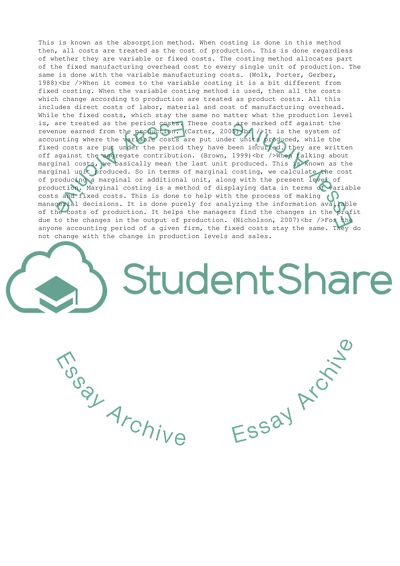Cite this document
(Cost Control and Performance Management: Full costing versus variable Case Study - 1, n.d.)
Cost Control and Performance Management: Full costing versus variable Case Study - 1. https://studentshare.org/management/1764220-cost-control-and-performance-management-full-costing-versus-variable-costing-does-the-choice-still-matter-second
Cost Control and Performance Management: Full costing versus variable Case Study - 1. https://studentshare.org/management/1764220-cost-control-and-performance-management-full-costing-versus-variable-costing-does-the-choice-still-matter-second
(Cost Control and Performance Management: Full Costing Versus Variable Case Study - 1)
Cost Control and Performance Management: Full Costing Versus Variable Case Study - 1. https://studentshare.org/management/1764220-cost-control-and-performance-management-full-costing-versus-variable-costing-does-the-choice-still-matter-second.
Cost Control and Performance Management: Full Costing Versus Variable Case Study - 1. https://studentshare.org/management/1764220-cost-control-and-performance-management-full-costing-versus-variable-costing-does-the-choice-still-matter-second.
“Cost Control and Performance Management: Full Costing Versus Variable Case Study - 1”. https://studentshare.org/management/1764220-cost-control-and-performance-management-full-costing-versus-variable-costing-does-the-choice-still-matter-second.


